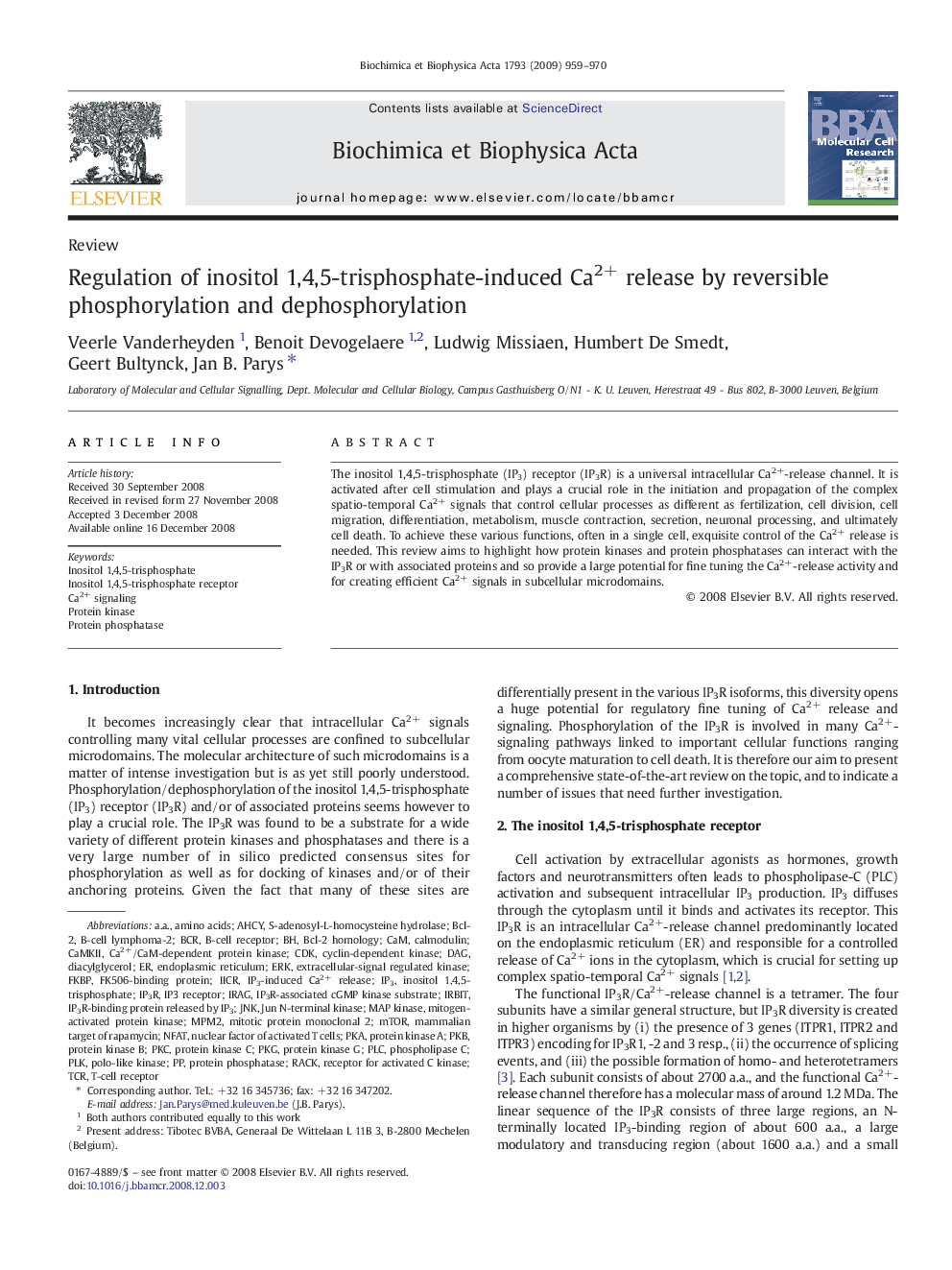| کد مقاله | کد نشریه | سال انتشار | مقاله انگلیسی | نسخه تمام متن |
|---|---|---|---|---|
| 1951143 | 1055746 | 2009 | 12 صفحه PDF | دانلود رایگان |

The inositol 1,4,5-trisphosphate (IP3) receptor (IP3R) is a universal intracellular Ca2+-release channel. It is activated after cell stimulation and plays a crucial role in the initiation and propagation of the complex spatio-temporal Ca2+ signals that control cellular processes as different as fertilization, cell division, cell migration, differentiation, metabolism, muscle contraction, secretion, neuronal processing, and ultimately cell death. To achieve these various functions, often in a single cell, exquisite control of the Ca2+ release is needed. This review aims to highlight how protein kinases and protein phosphatases can interact with the IP3R or with associated proteins and so provide a large potential for fine tuning the Ca2+-release activity and for creating efficient Ca2+ signals in subcellular microdomains.
Journal: Biochimica et Biophysica Acta (BBA) - Molecular Cell Research - Volume 1793, Issue 6, June 2009, Pages 959–970